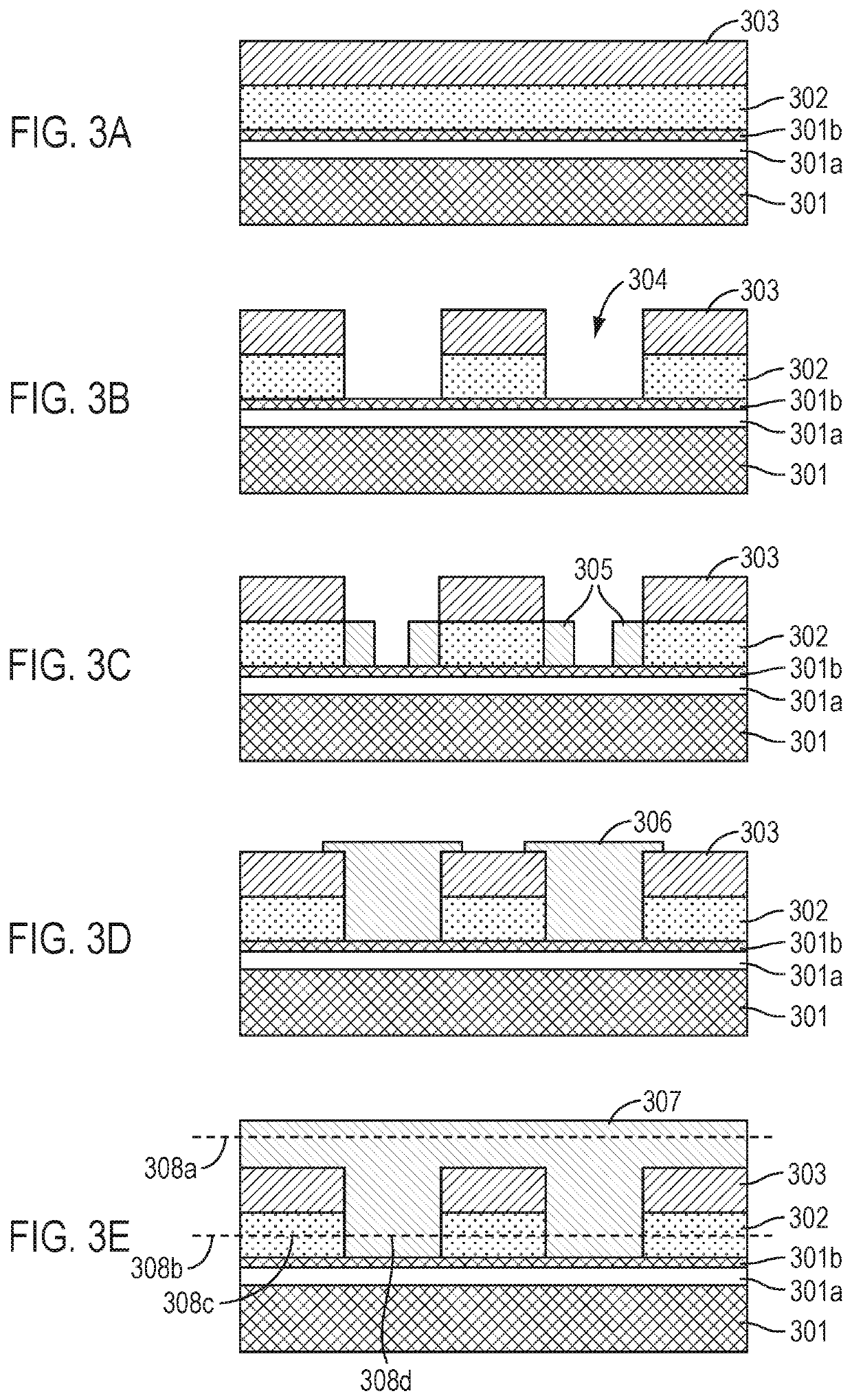Indium-gallium-nitride structures and devices
- Summary
- Abstract
- Description
- Claims
- Application Information
AI Technical Summary
Benefits of technology
Problems solved by technology
Method used
Image
Examples
Embodiment Construction
[0029]“Substantially uniform lattice constant” refers to a semiconductor layer characterized by a local lattice constant of the semiconductor layer that varies less than 1% with respect to an average lattice constant such as, for example, less than 0.5% with respect to an average lattice constant, or less than 0.1% with respect to an average lattice constant.
[0030]“Defect density” refers to the density, in plan view, of extended defects, such as dislocations, in a semiconductor layer. The defect density can be determined using, for example, etching (and counting etch pit density, EPD), cathodoluminescence to observe and count dark spots, atomic force microscopy (AFM) to observe and count small pits.
[0031]A lattice constant can be determined using X-ray diffraction (XRD) and reciprocal space map (RSM) analysis.
[0032]“III-V material” refers to a compound semiconductor material comprising at least one column-III element and at least one column-V element from the Periodic Table.
[0033]“G...
PUM
 Login to View More
Login to View More Abstract
Description
Claims
Application Information
 Login to View More
Login to View More - R&D
- Intellectual Property
- Life Sciences
- Materials
- Tech Scout
- Unparalleled Data Quality
- Higher Quality Content
- 60% Fewer Hallucinations
Browse by: Latest US Patents, China's latest patents, Technical Efficacy Thesaurus, Application Domain, Technology Topic, Popular Technical Reports.
© 2025 PatSnap. All rights reserved.Legal|Privacy policy|Modern Slavery Act Transparency Statement|Sitemap|About US| Contact US: help@patsnap.com



